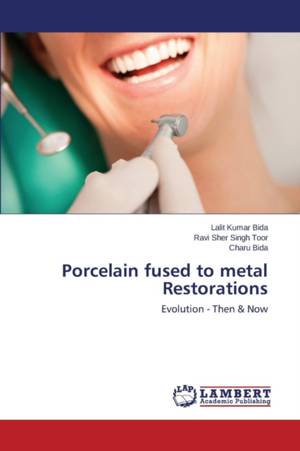
- Afhalen na 1 uur in een winkel met voorraad
- Gratis thuislevering in België vanaf € 30
- Ruim aanbod met 7 miljoen producten
- Afhalen na 1 uur in een winkel met voorraad
- Gratis thuislevering in België vanaf € 30
- Ruim aanbod met 7 miljoen producten
Porcelain fused to metal Restorations
Evolution - Then & Now
Lalit Kumar Bida, Ravi Sher Singh Toor, Charu Bida
Paperback | Engels
€ 68,45
+ 136 punten
Omschrijving
The last 50 years have witnessed an unbelievable amount of change in restorative dentistry. The evolution of materials and techniques has been so enormous that it has become virtually impractical for the clinician to keep abreast. An area of major change has been the ceramic restoration. The first break through came about with the introduction of the porcelain-fused-to-metal restoration. The ability to fire and fuse porcelain against gold alloy or base metals considerably extended the use of ceramic materials. Suddenly it was possible not only to generate single units of porcelain for anterior and posterior teeth but also to fabricate extended partial dentures. It is important to note that ceramic veneering of metal crowns or copings resulted in changes not only to the ceramic material but also to the casting alloys themselves. By using metal substrates with a higher casting temperature and a ceramic material with a lower fusion range, highly esthetic and durable restorations could be developed. This method of restoring missing teeth continues to play a very important role in the field of prosthodontics.
Specificaties
Betrokkenen
- Auteur(s):
- Uitgeverij:
Inhoud
- Aantal bladzijden:
- 96
- Taal:
- Engels
Eigenschappen
- Productcode (EAN):
- 9783659240423
- Verschijningsdatum:
- 10/03/2014
- Uitvoering:
- Paperback
- Afmetingen:
- 150 mm x 220 mm
- Gewicht:
- 144 g

Alleen bij Standaard Boekhandel
+ 136 punten op je klantenkaart van Standaard Boekhandel
Beoordelingen
We publiceren alleen reviews die voldoen aan de voorwaarden voor reviews. Bekijk onze voorwaarden voor reviews.








